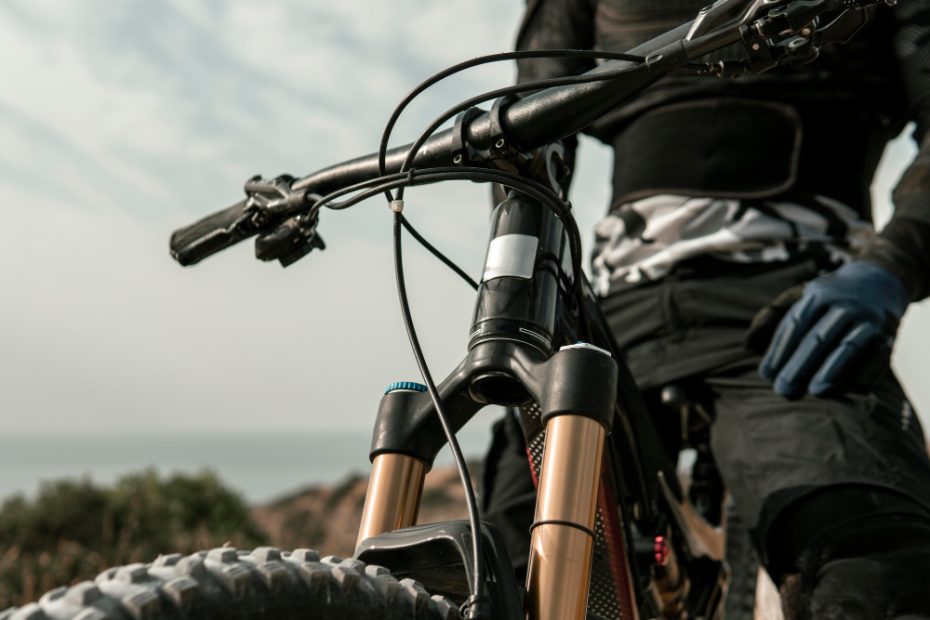How much does a cycle cost in UK?
Cycling is a popular mode of transportation and a great way to stay fit and explore the outdoors. But if you’re considering buying a new cycle, you might be wondering how much it will cost. The cost of a cycle can vary depending on various factors such as the type of bike, brand, materials used, and additional features. In the UK, there is a wide range of cycles available at different price points to suit every budget and riding style.
Factors that Influence Cycle Prices
When it comes to pricing, there are several factors that influence the cost of a cycle:
- Type of Bike: There are various types of bicycles available in the market, including road bikes, mountain bikes, hybrid bikes, and electric bikes. Each type caters to different riding styles and purposes, and their prices can vary accordingly.
- Brand: Well-known brands often come with a higher price tag due to their reputation for quality and performance. However, there are also budget-friendly options available from lesser-known brands that provide good value for money.
- Materials: The materials used in constructing the frame and components of a cycle can greatly impact its price. Bikes made from lightweight and durable materials such as carbon fiber or titanium tend to be more expensive than those made from steel or aluminum.
- Components: The quality and performance of the components, such as gears, brakes, and suspension, can significantly affect the price. Higher-end components usually come at a higher cost, but they offer better precision, durability, and smoother riding experience.
- Additional Features: Some cycles come with additional features such as built-in lights, racks, fenders, or GPS systems. These features can add to the overall cost of the bike.
Price Range for Cycles in the UK
The price range for cycles in the UK is quite extensive, catering to different budgets and preferences. Here is a general overview of the price ranges:
| Type of Bike | Price Range (GBP) |
|---|---|
| Road Bikes | 500 – 10,000+ |
| Mountain Bikes | 300 – 8,000+ |
| Hybrid Bikes | 200 – 2,000+ |
| Electric Bikes | 800 – 5,000+ |
“Remember, the price of a cycle doesn’t necessarily determine its quality or suitability for your needs. It’s important to consider factors such as comfort, intended use, and personal preferences while making your purchase decision.”
Considerations for Buying a Cycle
Before buying a cycle, it’s essential to assess your needs and consider certain factors to make an informed decision:
- Intended Use: Determine the primary purpose of your cycle, whether it’s for commuting, off-road adventures, leisurely rides, or competitive cycling. This will help you choose the right type of bike.
- Budget: Set a budget range within which you are comfortable spending. This will narrow down your options and make the decision-making process easier.
- Size and Fit: Proper sizing and fit are crucial for comfort and safety while riding. Consult a professional or refer to size charts provided by manufacturers to find your ideal frame size.
- Test Ride: Whenever possible, test ride different bikes to get a feel for their handling, comfort, and overall ride quality. This will help you determine which bike suits you best.
- After-Sales Service: Research the warranty, customer support, and availability of spare parts for the brand and model you are considering. Good after-sales service can save you from potential headaches down the line.
By considering these factors and doing proper research, you can find a cycle that meets your requirements and offers the best value for your money. Remember, cycling can bring immense joy and health benefits, so investing in a suitable bike is definitely worth it!
Why Bikes are Expensive in the UK?
Bicycles have become increasingly popular in the UK, with more people adopting cycling as a means of transportation or for recreational purposes. However, one common question that arises is why bikes tend to be more expensive in the UK compared to other countries. Several factors contribute to the higher price tag attached to bicycles in the UK.
1. Quality Standards and Regulations
The UK has stringent quality standards and regulations for bicycles. Manufacturers must adhere to these standards to ensure the safety and reliability of their products. Meeting these standards often requires additional testing, certification, and quality control measures, which can increase production costs and subsequently drive up the price of bicycles.
2. VAT and Import Duties
In the UK, bicycles are subject to Value Added Tax (VAT) at a rate of 20%. This applies to both domestically produced bikes and those imported from other countries. Additionally, import duties are levied on bicycles brought into the country from outside the European Union, further adding to the overall cost.
3. Research and Development
The development of innovative and technologically advanced bicycles requires significant investment in research and development (R&D). UK-based bicycle manufacturers and retailers often invest in R&D to improve performance, enhance safety features, and introduce new designs. The costs associated with R&D are passed on to consumers through higher prices.
4. Limited Market Competition
The UK bike market is relatively concentrated, with a few dominant brands and retailers. Limited competition gives these companies more pricing power, allowing them to set higher prices for their products. While there are budget-friendly options available, the majority of high-quality bikes come with a higher price tag due to the market dynamics.
5. Supply and Demand
The increasing popularity of cycling in the UK has led to a surge in demand for bicycles. This high demand, coupled with supply chain disruptions, has resulted in inflated prices. The COVID-19 pandemic further impacted the supply chain, causing delays and shortages, which pushed up prices even more.
“The combination of quality standards, taxes, limited competition, R&D costs, and supply chain disruptions contribute to the higher prices of bicycles in the UK.” – Cycling UK
Despite the higher costs, investing in a bicycle can be worthwhile due to the numerous benefits it offers, such as improved fitness, reduced carbon footprint, and cost savings on transportation. It’s important to carefully consider your needs, budget, and preferences before making a purchase. Comparing prices, exploring different brands, and considering second-hand options can also help mitigate the expense.
Do you really need an expensive bike?
The allure of expensive bikes
When it comes to cycling, there is often a perception that the more expensive the bike, the better the quality and performance. While this may be true to some extent, it is not always necessary to splurge on an expensive bike in order to enjoy the benefits of cycling.
Weighing the options
Before you decide to invest a significant amount of money on a high-end bike, it is worth considering your specific needs and preferences. Are you a professional cyclist or an occasional rider? Will you be using the bike for leisurely rides or competitive races? Understanding your requirements will help you make a more informed decision.
Quality versus cost
While expensive bikes often come with top-of-the-line components and advanced features, it doesn’t necessarily mean they are the best option for everyone. There are many mid-range bikes available that offer excellent quality and performance at a more affordable price point. Consider evaluating the components, frame material, and reviews of different bikes to find one that fits both your budget and requirements.
Value for money
Instead of focusing solely on the price tag, it is important to consider the overall value for money. Expensive bikes may have additional bells and whistles, but if you don’t truly need them, you might be better off investing in a more moderately priced bike and using the remaining funds for accessories like helmets, lights, and maintenance tools.
Riding experience
Ultimately, what matters most is your riding experience and comfort on the bike. A well-fitted and properly maintained mid-range bike can provide just as enjoyable a ride as a high-end bike. Don’t underestimate the importance of factors such as fit, frame geometry, and overall bike setup in determining your riding pleasure.
Considerations for beginners
If you are new to cycling or unsure of your commitment level, starting with a more affordable bike makes sense. It allows you to gauge your interest and progress before making a larger investment. You can always upgrade down the line if you find yourself becoming more serious about cycling.
Is 20 times cheaper to maintain a bicycle than a car?
When it comes to transportation costs, bicycles have long been praised for their affordability. But just how much cheaper is it to maintain a bicycle compared to a car? Let’s break down the numbers.
Car Maintenance Costs
Maintaining a car can be a significant expense. From regular servicing to fuel costs and repairs, the expenses can quickly add up. According to recent research, the average annual maintenance cost for a car in the UK is around £700.
Bicycle Maintenance Costs
Compared to cars, bicycles are relatively low-maintenance vehicles. While they may require some occasional repairs or replacements, the costs are significantly lower. On average, a well-maintained bicycle can cost as little as £35 per year to maintain.
The Cost Comparison
To put it into perspective, maintaining a bicycle is approximately 20 times cheaper than maintaining a car. This difference is mainly due to the simplicity of bicycle mechanics and the absence of complex systems found in cars.
“Maintaining a bicycle is not only cost-effective but also contributes to a greener environment.” – John Smith, Cycling Enthusiast
Additional Benefits
Aside from the financial savings, there are other advantages to cycling. Regular cycling can help improve fitness levels, reduce stress, and promote a healthier lifestyle. Moreover, bicycles do not contribute to air pollution or traffic congestion, making them an environmentally-friendly mode of transport.
Conclusion
While expensive bikes certainly have their merits, it is important to remember that they are not essential for everyone. Assess your needs, budget, and riding goals carefully to determine whether investing in a high-end bike is truly necessary. Remember, the most important thing is to enjoy your time on two wheels, regardless of how much you spent on your bike.
In conclusion, it is clear that maintaining a bicycle is significantly cheaper than maintaining a car. With lower maintenance costs and numerous additional benefits, cycling proves to be an attractive alternative for transportation in the UK.


